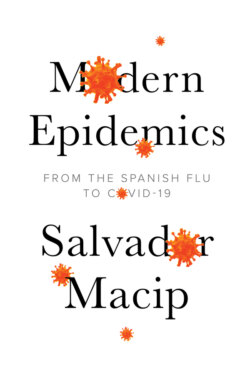Читать книгу Modern Epidemics - Salvador Macip - Страница 23
Viruses: the smallest life form?
ОглавлениеThe first signs of the existence of microorganisms smaller than bacteria date back to the 1870s when some Dutch scientists realized that there were mysterious agents that could pass through the filters that held back bacteria and, having done so, cause infections. The first virus was described in 1898 and, since then, more than 5,000 different types have been identified. As with bacteria, it’s believed that most of them haven’t been discovered yet.
Viruses are the tiniest life forms in existence (between 100 and 500 times smaller than bacteria), although many people debate whether they are really alive or not, the reason being that they are not able to function alone because they must invade a cell in order to divide. In fact, viruses are nothing more than a group of genes surrounded by a more or less complex capsule that enables them to penetrate the cells of animals, plants or even bacteria themselves. Unlike the latter, they tend not to bring any benefit to the organisms they infect: they are more like parasites.
They are also the planet’s most abundant organism and are found in all ecosystems. If we lined up all the viruses in the oceans, for example, they would extend 100 times further than the limits of our galaxy. Some are innocuous for humans and others can cause chronic (like hepatitis) or acute (like influenza or the common cold) diseases. Viral infections tend to be generalized and don’t cause pain, unlike the bacterial kind, which are normally localized and cause inflammation or pain in the affected area.
However, viruses can be used to our advantage. They are essential, for instance, as tools in a great number of laboratory experiments. They enable us to introduce genes into cells, which can be useful not only in experiments but also for treatments like gene therapy. And, for quite some time now, viruses that attack bacteria (called bacteriophages) have been studied with a view to their use as an alternative to antibiotics.
Our current knowledge of genetics and molecular biology allows us to manipulate viruses in every conceivable way. In the opinion of the Galician virologist Luis Martínez-Sobrido, professor and head of a virology research group at the Texas Biomedical Research Institute in San Antonio (USA), ‘there’s no end to the possibilities’. He adds: ‘In the last sixty years since Watson and Crick discovered the structure of DNA, more progress has been made in the study of living beings than in the entire history of humanity.’1
Certainly, for some years now we’ve been able to play with the genes contained in a virus, putting them in or removing them as we see fit, depending on whether the aim is to eliminate one of their functions or add a new one. One example is the use, in studies for the Ebola vaccine, of VSV, a virus that’s inoffensive for humans, into which Ebola genes have been introduced in the hope that this will cause an immune response but without developing the disease. ‘From the technical point of view, it’s only a matter of time before we’ll be able to do anything we want with viruses’, says Dr Martínez-Sobrido. ‘As they said in the film, I Am Legend, viruses are like cars. With a good driver at the wheel, a car will take us where we want to go, and we’ll benefit from that. A bad driver, however, can cause death.’
But we also need to remember that studying viruses is complex and expensive, especially because of their size. In the words of Luis Martínez-Sobrido:
We virologists are like astronomers. Both need big, expensive equipment to magnify very small and distant objects. Viruses are so tiny you can’t see them with traditional microscopes. They require expensive, complex, electronic microscopes. Computer science is revolutionizing this field, but there’s also a big economic cost. The same thing goes for the reagents that are necessary for cultivating and studying viruses. Nevertheless, the main limitation isn’t economic resources but personnel. It seems that the adventurous, inquiring spirit has been disappearing lately, perhaps because our society values other qualities more than research or working to improve the quality of life. After all, the budget of a research laboratory is less than what many footballers are paid.
Viruses aren’t only harmful because of the infectious diseases they cause. It’s also been found that they play an important role in cancer. Some experts say that up to 20 per cent of cancers could have a viral cause, although at the moment only a few are known and the figure could be much higher in reality. For example, there’s a relationship between certain kinds of hepatitis and liver cancer, between the retroviral infection HTLV-1 and leukaemia, and between the human papillomavirus and cancers of the uterus (which is why a vaccine was produced to protect women against the virus and, hence, cancer). It’s also believed, as some studies suggest, that the onset of diabetes might be in some way related to previous viral infections. One theory ventures that certain viruses might force our defence systems to attack our own tissues, which would eventually destroy the pancreas cells that produce insulin.
